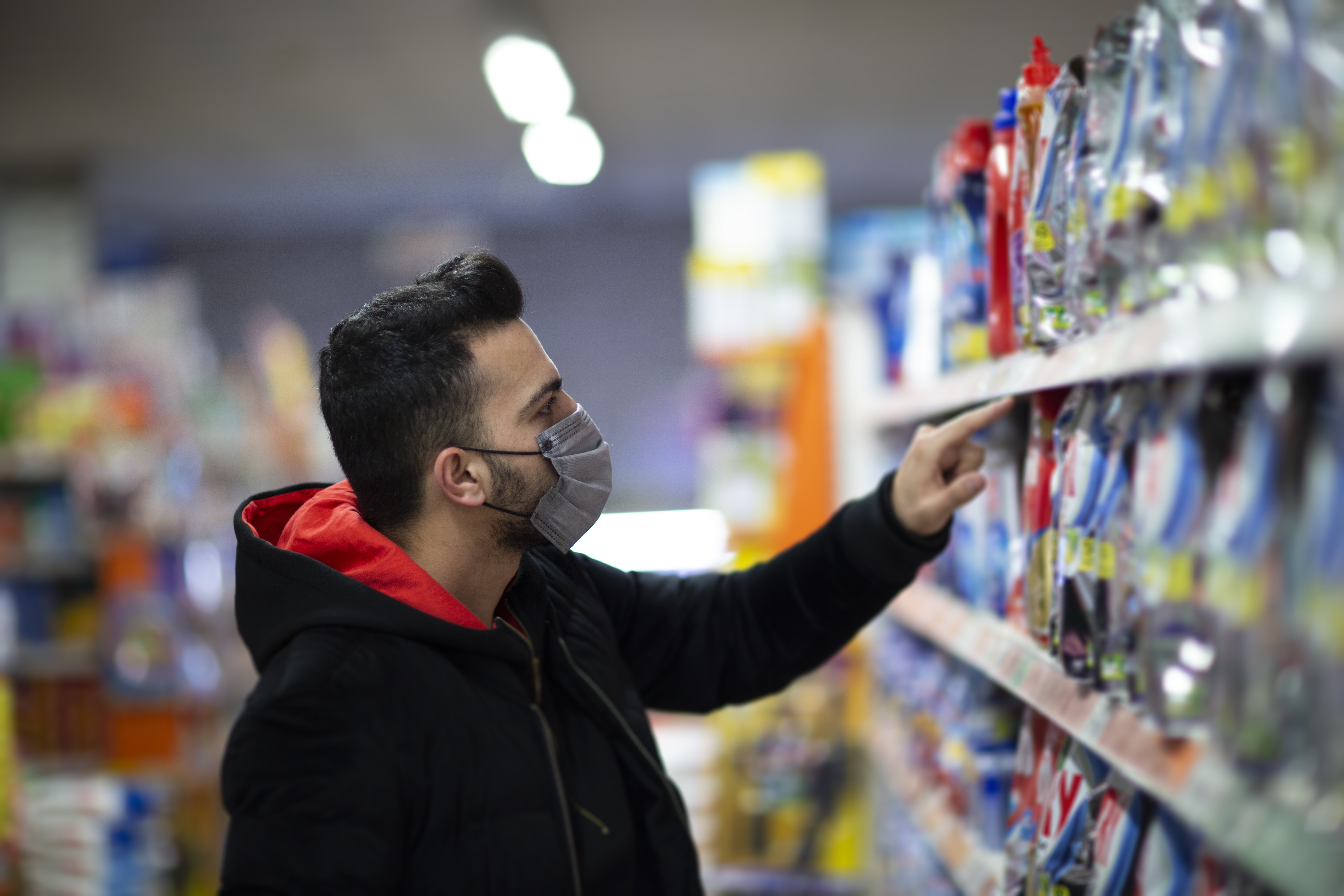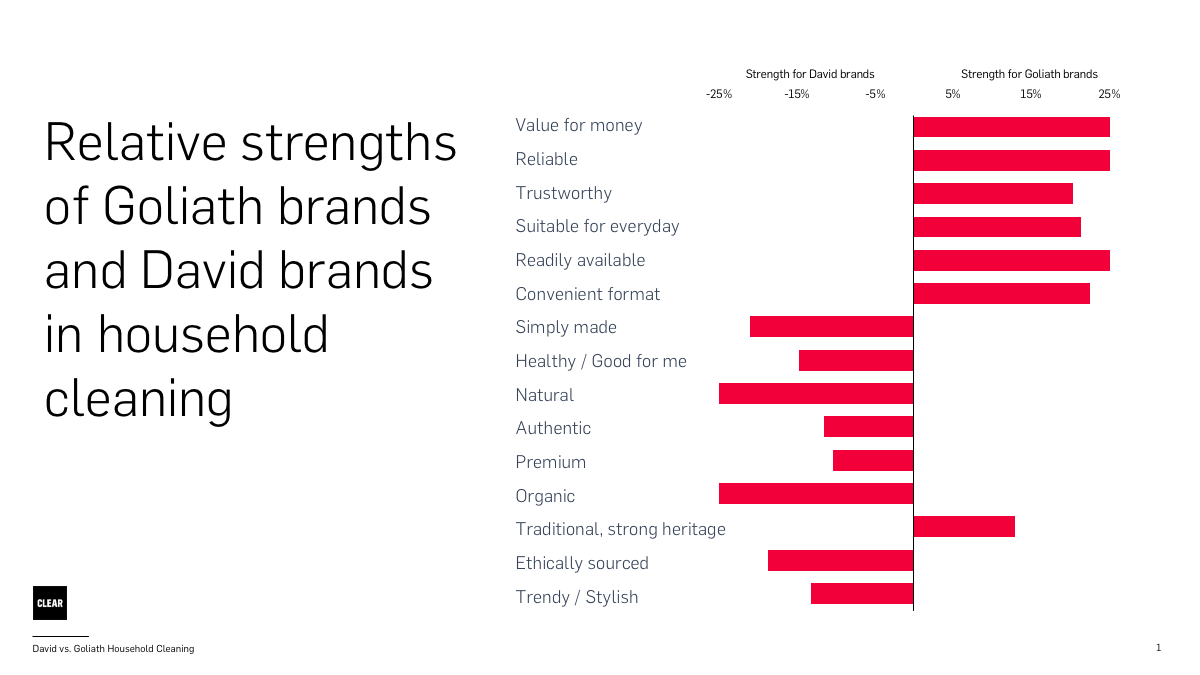
Returning to the tried and true
What big, established brands should do to cement their resurgence through 2021
We’re at capacity in terms of information, misinformation, opinions, emotions, and exhaustion. What products to get, what to use. You love your favorite paper products, but for now, you just grab whatever brand of paper towels are left on the shelf. With all that’s happening, you can suffer through some of the rougher rolls of toilet paper, right?
But – when it comes to cleaning supplies, you don’t hesitate to gravitate toward the trusted and familiar. The names whose catchy jingles still pop in your head from hours of childhood TV. Brand names that seem to “have always been there” but you passed over for the shiny new thing. And to reinforce this familial-like comfort, these names dominate and are probably the only ones you recognize on the EPA COVID-19 Disinfectant List.

Man with the mask on his face at the Supermarket is looking for a disinfectant
We have regressed back down Maslow’s Hierarchy of Needs and our product choices reflect our current want for security and safety. Store shelves are heavy with products marketed as “all-natural” and gaping empty holes exist where these time proven trusted cleaners once stood stocked. As consumers, we are shopping for trusted competence rather than admired intent.
Sizing up the opposition
In 2017, we conducted a proprietary study and published a series of posts on this never-ending battle of David vs. Goliath. Across the majority of the 19 categories we tested (including household cleaning), we revealed that many big, well-known brands in the UK and US were vulnerable to the influx of insurgent ‘Davids’ that were now tugging quite differently on our emotional heartstrings with their unorthodox packaging, claims, ingredients and ethos, forging different connections that outweighed the tried and true strengths of the Goliath brands. These tactics fostered new and deeper connections with consumers, especially within the 18-35 year old cohort.
 Unsurprisingly, our Goliath brands won on strength in heritage and were preferred within the top category drivers such as value, trustworthiness, convenience, and availability. Despite this strong equity, insurgents owned nearly all the other category drivers, including healthy/good for me, natural, organic, trendy and stylish. Pre-pandemic crisis, we had climbed to the top of Maslow’s pyramid and exercised our need for esteem and self-actualization by purchasing products that instilled a sense of purpose, self-expression, and betterment of oneself and the environment. David had thrown the rock and seemingly hit the massive Goliath between the eyes.
Unsurprisingly, our Goliath brands won on strength in heritage and were preferred within the top category drivers such as value, trustworthiness, convenience, and availability. Despite this strong equity, insurgents owned nearly all the other category drivers, including healthy/good for me, natural, organic, trendy and stylish. Pre-pandemic crisis, we had climbed to the top of Maslow’s pyramid and exercised our need for esteem and self-actualization by purchasing products that instilled a sense of purpose, self-expression, and betterment of oneself and the environment. David had thrown the rock and seemingly hit the massive Goliath between the eyes.
Sustaining growth through 2021
However, in the midst of our current global crisis, we find Goliath still standing, stronger than ever, and, for the first time in a while, back in growth. The challenge then is this – how to move beyond trusted name recognition and perceived superior efficacy to turn a short term gain into a long term win.
With their extensive R&D resources, centuries of experience, and long-standing retail and B2B relationships, they have the power to redesign our relationship with them – through smart partnerships (Hilton + Lysol), disruptive innovation and smart supply chain management.
Historians suggest blindness or heavy armor as reasons for Goliath’s loss to David. Likewise, this crisis has proved that having the vision to identify the right insights and the agility to make the right moves to adapt to the changing environment are crucial. By leveraging a cohesive sensory strategy and going back to authentic marketing tactics, Goliath brands – with their inbuilt financial and scale advantages, can refocus and strengthen the pipeline to ensure they don’t lose to an underestimated David in the future.
3 clear steps Goliath brands should take now to prepare for 2021 and beyond:
1. Gather and leverage fresh consumer insights that lean into our changed circumstances. Review attitudes, behaviors and sensory reactions to conduct an honest evaluation of the strength of current competitive positioning in the long term.
2. Innovate or renovate products with strong sensory cues that support the brand promise and desired positioning, leveraging learnings from understanding how the insurgents were successfully connecting with your consumers pre-crisis.
3. Don’t take your consumers’ trust for granted. Support their lives as an authentic purpose-driven brand no matter where they find themselves on “the pyramid”.